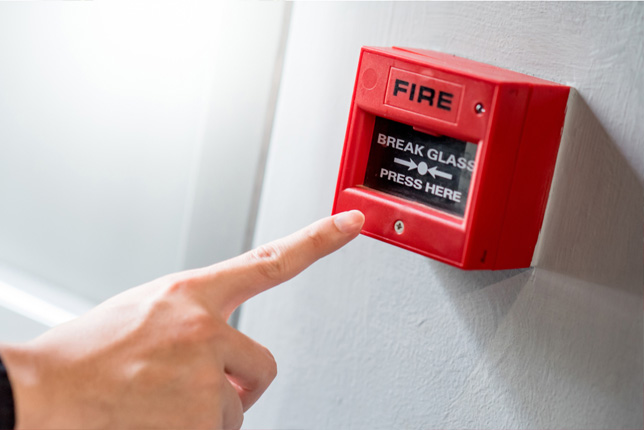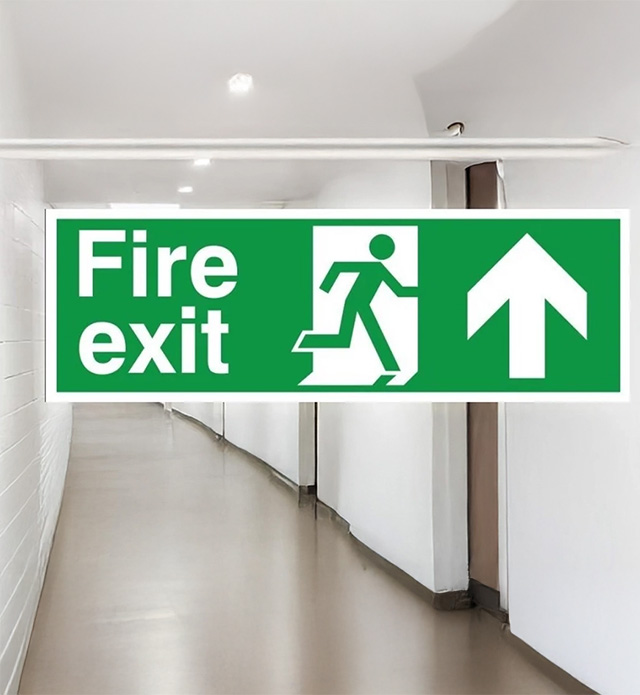Fire Alarm System
Introduction to Fire Alarm System
A Fire Alarm System is a crucial safety mechanism designed to detect and warn occupants about the presence of fire, smoke, or heat in a building. It consists of smoke detectors, heat sensors, manual call points, alarm sounders, and a control panel that monitors and manages alerts. When a fire or smoke is detected, the system activates audible and visual alarms, allowing for a quick evacuation and timely response. Advanced fire alarm systems can also be integrated with automatic suppression systems, emergency lighting, and building management systems to enhance fire safety. Regular testing, maintenance, and compliance with fire safety regulations are essential to ensure the system functions efficiently in emergencies.
Different technologies to extinguish fire depending on the occupancy and type of fire is as follows.
Standards Followed
The Indian Standards (IS) for fire safety and gas suppression systems are established by the Bureau of Indian Standards (BIS) to ensure the safety and reliability of fire protection mechanisms. These standards cover various aspects, including design, installation, maintenance, and performance of fire suppression systems. IS 15105:2002 is a key standard related to gas-based fire suppression, ensuring compliance with safety protocols in commercial and industrial applications.
The National Building Code (NBC) of India provides comprehensive guidelines for fire safety, including fire suppression systems. It categorizes buildings based on occupancy and prescribes the necessary fire protection measures. Part 4 of the NBC specifically addresses fire and life safety, recommending gas suppression systems for areas where water-based suppression is unsuitable, such as data centers and electrical rooms.
The National Fire Protection Association (NFPA) is a globally recognized organization that develops fire safety standards, including those for gas suppression systems. NFPA 2001 is a crucial standard governing clean agent fire suppression systems, ensuring effective fire control without damaging sensitive equipment. NFPA standards are widely adopted for their rigorous safety and performance requirements.
The British Standards (BS) set by the British Standards Institution (BSI) provide fire protection guidelines widely used in the UK and internationally. BS EN 15004 is a significant standard covering gaseous fire suppression systems, aligning with international best practices. These standards ensure that suppression systems meet high safety, reliability, and environmental impact criteria.
FM Global (Factory Mutual) and UL (Underwriters Laboratories) are independent organizations that certify fire suppression systems for quality, reliability, and effectiveness. FM-approved and UL-listed gas suppression systems meet stringent testing criteria, ensuring they function efficiently in real-world fire scenarios. Compliance with these certifications assures businesses and industries of the highest safety and performance standards.
Service Industry
- Commercial
- Residential
- Institutional
- Assembly
- Business
- Hospital
- Educational
- Industrial
- Mercantile
The above inclusive of the Office building ,Shopping centers, Mall, Auditorium, Banks, Hotels, Residences, Laboratories, Hospitals, Colleges, Dormitory blocks, Factories, Ware houses, Server room, Electrical equipment blocks.
Manual Type Fire Alarm System
A Manual Type Fire Alarm System is a fire detection and alert system that relies on human intervention to activate alarms in case of a fire. It consists of manual call points or pull stations strategically placed throughout a building, allowing occupants to trigger the alarm by pressing or pulling the device. Once activated, the system sends an alert to a control panel, which then activates audible and visual alarms, notifying occupants to evacuate. Unlike automatic fire alarm systems that rely on smoke or heat detectors, manual systems require a person to detect and report the fire. These systems are commonly used in commercial buildings, factories, and public spaces as a cost-effective and reliable method of fire detection. Regular testing and proper placement of call points are essential to ensure quick response and effective fire safety.
Manual Type Fire Alarm System

Conventional Fire Alarm System

Conventional Fire Alarm System
A Conventional Fire Alarm System is a widely used fire detection system that divides a building into multiple zones to identify the location of a fire. Each zone is connected to a control panel with detectors and manual call points, such as smoke or heat detectors. When a fire is detected, the system triggers an alarm, indicating the affected zone rather than a precise detector location. This system is cost-effective and commonly used in small to medium-sized buildings like schools, offices, and retail spaces. Although it provides reliable fire detection, it requires manual inspection of the zone to pinpoint the exact source of the fire. Regular maintenance and periodic testing are essential to ensure proper functionality and compliance with fire safety regulations.
Addressable System
An Addressable Fire Alarm System is an advanced fire detection and notification system that provides precise identification of fire incidents in large buildings and complex infrastructures. Unlike conventional systems, which group detectors into zones, an addressable system assigns a unique address to each detector, call point, and device. This allows for real-time monitoring and quick identification of the exact location of a fire, fault, or maintenance issue. These systems improve response time, reduce false alarms, and enhance overall safety management. They are commonly used in commercial buildings, hospitals, industrial facilities, and high-rise structures where accurate fire detection and early warning are critical. Additionally, addressable fire alarm systems integrate with other fire protection mechanisms, such as suppression systems and emergency communication networks, ensuring a comprehensive fire safety solution.
Addressable System

Scope of our Work:
- Preliminary site visit and discussion with Architect / Client and project feasibility survey.
- Necessary NOC drawings with document (No objection certificate). (For base building projects).
- Preparation of Preliminary design Brief (DBR) with Schematic.
- Preparation of Preliminary designs for the Client / Architects approval of comments if any, by way of drawings to explain the general planning and nature of works with the basic dimensions, inclusive of basic requirement for the safety & security systems shafts etc and other features required for services. Obtaining the approval of the Client / Architect.
- Making Technical specification, Bill of Quantity & Tender Layout (For better understanding of our requirement).
- Provided the Estimated Bill of quantity for client to get idea for budgeting.
- Preparing & floating the tender enquiry with tender drawing for system.
- Scrutinizing & comparing the offers of various bidders.
- Providing assistance to client in negotiation and finalizing of the contractors.
- Coordinating the overall designing with other services i.e. HVAC, ELECTRICAL, FIRE FIGHTING & LOW CURRENT systems and preparing the detail section which will be useful for Vendor & PMC to run the project in smooth way and without any issues of installation on site.
- Our support will extend unto preparation of the above false ceiling coordination & False ceiling coordination layouts.
- Describe the requirement of our system to the vendor in the kick off meeting with the Good for construction layout (GFC).
- Checking and approving the shop layout submitted by the vendors.
- Periodical visits to the site of work during the execution to ensure that the intent of the drawings is duly carried out and that technical features envisaged by the consultant are properly executed.
- Generate the site visit report with proper snap shots to reduce the uncertainty of installation. This will help to avoid rework during the commissioning stage.
- Provide necessary test certificate format and witnessing the performance test for all the involved systems.
- We ensure to obtain ideal Handing over procedure.




